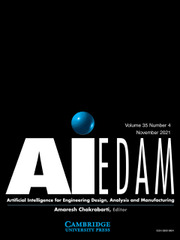No CrossRef data available.
Article contents
Stacking ensemble learning based material removal rate prediction model for CMP process of semiconductor wafer
Published online by Cambridge University Press: 15 November 2024
Abstract
The material removal rate (MRR) serves as a crucial indicator in the chemical mechanical polishing (CMP) process of semiconductor wafers. Currently, the mainstream method to ascertain the MRR through offline measurements proves time inefficient and struggles to represent process variability accurately. An efficient MRR prediction model based on stacking ensemble learning that integrates models with disparate architectures was proposed in this study. First, the processing signals collected during wafer polishing, as available in the PHM2016 dataset, were analyzed and preprocessed to extract statistical and neighbor domain features. Subsequently, Pearson correlation coefficient analysis (PCCA) and principal component analysis (PCA) were employed to fuse the extracted features. Ultimately, random forest (RF), light gradient boosting machine (LightGBM), and backpropagation neural network (BPNN) with hyperparameters optimized by the Bayesian Optimization Algorithm were integrated to establish an MRR prediction model based on stacking ensemble learning. The developed model was verified on the PHM2016 benchmark test set, and a Mean Square Error (MSE) of 7.72 and a coefficient of determination (R2) of 95.82% were achieved. This indicates that the stacking ensemble learning based model, integrated with base models of disparate architectures, offers considerable potential for real-time MRR prediction in the CMP process of semiconductor wafers.
- Type
- Research Article
- Information
- Copyright
- © The Author(s), 2024. Published by Cambridge University Press



